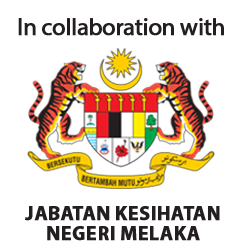WORKSHOP 1
Comprehensive Care For Tiny Babies Workshop
Thursday, 19 June 2025
Doubletree By Hilton Shah Alam I-City, Shah Alam, Selangor, Malaysia
Introduction to the Course
The advancement of neonatal intensive care technology has dramatically improved our ability to save extremely premature and growth-restricted infants. However, these vulnerable small babies face significantly higher lifetime complications compared to larger neonates or those of higher gestation. These complications include chronic lung disease leading to recurrent respiratory infections or wheezing disorders, neurological complications such as intraventricular haemorrhage and periventricular leukomalacia which may result in cerebral palsy, and gastrointestinal issues like necrotising enterocolitis that can cause long-term nutritional challenges.
As survival rates improve, there is an urgent need to reduce these associated morbidities among extremely preterm infants and in those who experience in-utero complications. Successfully managing these vulnerable newborns requires a deep understanding of their physiological transitions during the critical "golden hour" after birth, as well as expertise in supporting their adaptation to the challenging and physiologically hostile extra-uterine environment.
This workshop aims to equip neonatologists, paediatricians, paediatric medical officers, neonatal nurses, and healthcare workers who manage high-risk small babies with the essential skills and knowledge to improve their outcomes. Participants will learn evidence-based strategies to enhance survival rates whilst minimising associated complications.
Learning Outcomes
- Demonstrate an understanding of the principles of management and of the critical physiological transitions during the "golden hour" of life in extremely preterm and growth-restricted infants.
- Utilise evidence-based strategies for stabilisation and support in the advanced management of extremely low birth weight (ELBW) and small for gestational age (SGA) infants.
- Identify and manage common complications including respiratory distress, circulatory compromise, and temperature instability specifically for vulnerably small newborns.
- Develop the competency in advanced skills including thermoregulation, cardiorespiratory support, skin care, line care, transport, and procedures required for the optimal management of extremely small babies.
Workshop Faculty
Dr. Tetsuya Isayama
Consultant Neonatologist
Head of Division of Neonatology
National Center for Child Health and Development (NCCHD)
Tokyo, Japan
Dr. Azanna Ahmad Kamar
Associate Professor
Consultant Paediatrician and Neonatologist
Head of Department of Paediatrics
Faculty of Medicine
Universiti Malaya
Kuala Lumpur
Dr. Quek Bin Huey
Senior Consultant Neonatologist
Adj Asst Prof, DUKE-NUS Medical School Singapore
Head, Neonatal Intensive Care Unit (NICU)
KK Women’s and Children’s Hospital
Singapore
Dr. Eric Ang Boon Kuang
Consultant Paediatrcian and Neonatologist
Hospital Sultanah Bahiyah
Alor Setar
Kedah
Ms. Rajammal Palaniappan Kaliappan
Nurse Clinician
Neonatal Intensive Care Unit
KK Women’s and Children’s Hospital
Singapore
Dr. Wong Ann Cheng
Consultant Paediatrician and Neonatologist
Hospital Miri
Sarawak
Dr. Yvonne Ng Peng Mei
Adjunct Associate Professor & Senior Consultant Neonatologist
Faculty of Medicine
National University of Singapore
Singapore
Dr. Wong Chee Sing
Paediatrician and Neonatologist
Hospital Raja Permaisuri Bainun
Ipoh
Perak
Ms. Shelly Anne Sherwood
Principal Physiotherapist
Physiotherapy Department
KK Women’s and Children’s Hospital
Singapore
Dr. Agnes Tan Sun Mee
Paediatrician and Neonatologist
Hospital Sg Buloh
Selangor
Ms. Santhi Verasingam
Matron
Neonatal Intensive Care Unit (NICU)
Hospital Raja Permaisuri Bainun,
Ipoh
Perak
Dr. Lilian Ngo Ping Ling
Paediatrician and Neonatologist
Hospital Ampang
Selangor
| Time | WORKSHOP DETAILS | |
| 0800 - 0830 | WORKSHOP REGISTRATION W1: Comprehensive Care for Tiny Babies | |
| ESSENTIALS OF THE GOLDEN HOUR | ||
| 0815 - 0830 | Welcome to the “Comprehensive Care for Tiny Babies” Workshop | AZANNA AHMAD KAMAR |
| 0830 - 0915 | W1a: How to Optimise the Golden Hour for the Tiny Baby - An Overview | QUEK BIN HUEY |
| 0915 - 0945 | W1b: The First Barrier - Thermoregulation & Skin Care from the 1st Minute to Beyond | YVONNE NG |
| 0945 - 1015 | W1c: The Dilemma of Fluid Requirement in Tiny Babies - A Comparison of Guidelines | AZANNA AHMAD KAMAR |
| 1015 - 1045 | W1d: Strategies for Lung Recruitment and Rescue at Birth in ELBW infants | WONG ANN CHENG |
| 1045 - 1115 | BREAK | |
| 1115 - 1145 | W1e: Transporting the ELBW Infant - Problems & Troubleshooting | ERIC ANG |
| 1145 - 1305 | THE GOLDEN HOUR `HANDS-ON’ (4 Groups - swap every 20 mins) |
|
| 1145 - 1205 | Station 1: The First Barrier - Thermoregulation, Humidity & Skin Care | YVONNE NG PENG MEI SANTHI VERASINGAM |
| 1205 - 1225 | Station 2: Neurodevelopmental Care & Positioning for ELBW Infants | SHELLY ANNE SHERWOOD |
| 1225 - 1245 | Station 3: Lung recruitment - Early CPAP (enCPAP) for ELBW during resuscitation |
WONG ANN CHENG/ AZANNA A KAMAR |
| 1245- 1305 | Station 4: Transporting the ELBW Neonate - Initial settings and the set-up of transport incubator & ventilator |
ERIC ANG/ LILIAN NGO |
| 1305 - 1400 | LUNCH | |
| 1400 - 1530 | MONITORING & STABILISING THE ELBW | |
| 1400 - 1430 | W1f: Nomograms and Red Flags for ELBWs: Making Sense of Vital Signs to Guide Decisions | AGNES TAN SUN MEE |
| 1430 - 1500 | W1g: Point of Care Ultrasound to Improve Outcomes of VLBW Infants - The Japanese Approach | TETSUYA ISAYAMA |
| 1500 - 1530 | W1h: Securing, and Care of PIVs and Central Catheter Access for Nutrition & Vasoactive Agents in ELBWs | LILIAN NGO |
| 1530 - 1550 | TEA BREAK | |
| 1550 - 1710 | MONITORING & STABILISING THE ELBW `HANDS - ON’ (4 Groups - swap every 20 mins) |
|
| 1550 - 1610 | Station 1: PICC Insertion & Care of the PICC Line | LILIAN NGO SANTHI VERASINGAM |
| 1610 - 1630 | Station 2: Using Ultrasound to Guide Central Line Insertion | WONG CHEE SING |
| 1630 - 1650 | Station 3: The Japanese Approach for Ultrasound in ELBW Infants | TETSUYA ISAYAMA |
| 1650 - 1710 | Station 4: Monitoring of ELBW status using vital signs and ultrasound | AGNES TAN SUN MEE |
| 1710 - 1730 | DISCUSSION & CONCLUSION | |
| END OF W1 |

